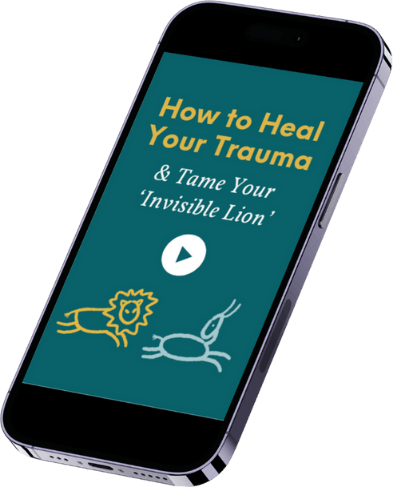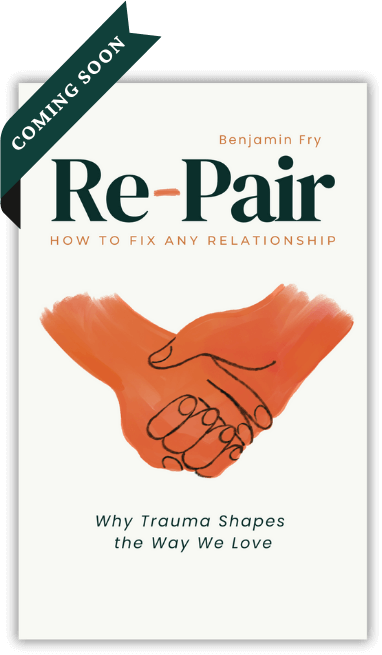Blog / Video #8
This is a really personal topic. PTSD nearly killed me. And I’ve never been to war, or anything like it. At first, when it was suggested to me that this was my problem, I thought my therapists were nuts. But what they were doing was helping me. And in a year of extreme ill health, nothing else had helped me. So, I just nodded politely and went along with it. Now I understand what they were talking about. And it’s important to share.
I’ve come to dislike using the word ‘trauma’ because nowadays everyone uses it for everything. I particularly don’t like the way that it has become a buzz word for marketing when organisations are trying to sell their therapies, workshops or treatments. If you are going to use the word, then you really need to know what it means. And if you know what it means, you don’t actually need to use it.
So here’s what I would say instead: an unfinished response to an earlier threat. Perhaps this is not as pithy as ‘trauma’, but at least it says what it is. And, crucially, it helps you to understand what to do about it.
P.T.
All mammals respond to threat with a predictable cycle. If the animal has a healthy nervous system then this cycle of response will optimise its response to any level of threat as it happens. The reason to do this is to survive. We have evolved to survive before we do anything else, so our responses to threat are very important, and very deeply rooted.
A threat response cycle goes like this (in a healthy mammal, which you and me probably are not).
· Rest
· Some vigilance
· Run for your life (flight)
· And/or, fight for your life, depending on which is working best (fight)
· If both fail, then shut down completely (freeze)
· If by some miracle your survive, run again
· Discharge all this energy
· Rest
It looks like this if you draw it on a diagram of activation versus time. The red line is the point at which the threat was overwhelming, and the animal just gave up, or froze. The little blue dots represent the charge still in the system at the point when the animal freezes. This then discharges if it survives. You can see a video of this on the resources page of the Invisible Lion website.

A threat cycle
If you want to know what PTSD means, then start with PT. This stands for Post Traumatic, and all that means is that your body has at some point arrived in the well in the middle of this graph. If your system hits the redline and then freezes, then you are Post Traumatic.
The big question is, will you recover?
S.D.
This stress response cycle is a natural, physical phenomenon which mammals have been learning to do over about a hundred million years. We are good at it and it happens automatically. However, what happens if this gets interrupted?
Let’s not worry why it gets interrupted (for now, although you can read why elsewhere). The problem comes if all that energy stored in the well in the middle can’t be released and discharged. This is caused by the nervous system trying to release the energy, but then something else (usually our not so brilliant thinking, human minds) getting in the way. This creates a kind of tug of war in the body, which is both uncomfortable and unhelpful. The net result of it is that we end up back at square one, still with the charge in the body. It looks like this.

An incomplete threat cycle
The diagram above represents a gazelle (in green) drinking at a watering hole, and a lion (in red) ready to eat it. He gazelle notices the lion, and so its nervous system charges up, ready to take action. The charge is too much, and the gazelle becomes overwhelmed (represented by the red line), entering a state of freeze. The problem demonstrated in this diagram is that when the lion, or the danger passes, the gazelle’s threat response is stuck and their nervous system acts in a dysregulated way.
After the lion has left, and the gazelle tried to run off his stored energy, it didn’t work and so it didn’t end up back where he started, at rest at the watering hole. This is not good.
That uncomfortable squiggly blue line on the right is a disordered response to threat. Or another way of saying that is that it is a stress disorder. This is the S.D. It’s very unpleasant and doesn’t go away. It just makes us feel like we are back in a situation of overwhelming threat, and then once it subsides a bit, it is just waiting there again to hijack us all over. Nothing changes unless it is discharged.
PTSD
So know we know what PTSD is. It is when something has been PT, that is our bodies have been taken over the redline and into a freeze of some kind. And then we have not fully exited that freeze by discharging that energy, leaving us with an odd response to threat, a SD.
You need both to have PTSD. Thus, an unfinished response to an earlier threat. That’s what it means, and all you need to say.
The key point here is that we say nothing about the event itself. You cannot define PTSD (or ‘trauma’) by telling me what happened in the outside world. You can only define it by what the nervous system did in response.
Was it overwhelmed? Check.

Post Traumatic
Did it fail to fully Discharge? Check.

Stress Disorder
Then, PTSD.
To treat PTSD, therefore, it seems obvious that we have to treat the nervous system to help it to recover its strength and then to discharge its unfinished business. For more ideas about how to do that have a look at the 28-day recovery plan in my book The Invisible Lion, or here on the website in the resources section.
You can download this post in a handy 2-page PDF to print and share with friends, family, clients or colleagues. Follow this link to download now.
You can buy a copy of The Invisible Lion now on kindle or paperback from your local Amazon store. Just click here to buy now.






